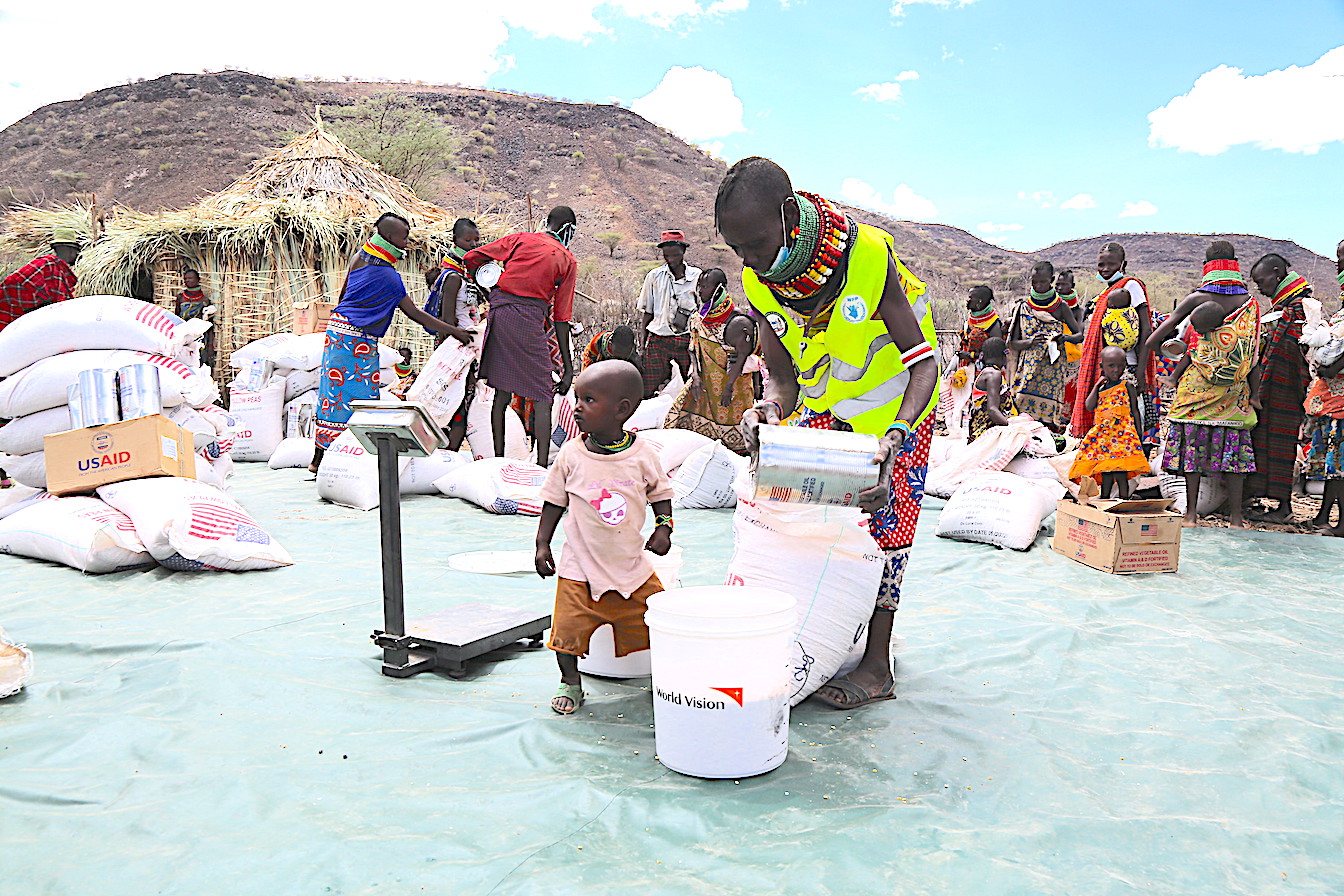Communities resort to wild fruits as drought bites in Kenya
By Martin Muluka, World Vision communication specialist.
Desperate times call for desperate measures. And these are not ordinary times for over 185,000 people in Turkana County, Kenya. The area has been hit the hardest by the food and water crisis in the country, due to the on going drought.
What do you do as a mother when your eight-month old baby is too weak to cry because of hunger and thirst?
This is the dilemma that Locher, a resident of Turkana County faces. When we walk into her compound in Kaaruko village, she is seated outside her palm-thatched kitchen.
The sound of a rock crashing nuts is too loud to ignore. Locher is doing what a mother would do, as a last resort to fill the belly of her hungry child.
She is using the only available source of food in her environment to provide a lifeline for her child, Lokoruo.
The Turkana community heavily depends on the Doum palm trees (also known as Eng'ol in the Turkana language) in times of food crises. It grows in dry areas, along dry river courses and produces edible wild fruits.
Locher uses a knife to shave off some of the fibre coating the dry fruit. Before feeding it to her child, she first softens it with her saliva, due to the lack of water in the area since most rivers have long dried up.
She is not alone; Locher is in the company of her village mates, who have come to her compound to look for food.
Life in this village is generally communal and word had gone round that she was lucky to get some wild fruits from the Doum palms.
She shares a few kernels she can spare with her friend Longor, who uses them to prepare a meal for her starving seven-month-old baby, Eyanae.
“Yesterday I went out to look for food and water. As I was walking along the dry river beds , I was happy to spot fruits on the Eng'ol tree (Doum palm). I immediately put my baby down and climbed the tree, so as to get the fruits. They have enabled me to get something for my child to eat. But this is not enough,” says Lochar.
She counts herself among the lucky few, since food sources have been hard to come by, for communities in Turkana County due to the on going drought in the area.
Even the wild fruits, which offer reprieve during such desperate times, are difficult to find. The few that exist can hardly meet the food requirements of a household, let alone the entire community.
Relying on the fruits alone also deprives children and families of key nutrients that usually come from different food types. This is taking a toll on the health and well-being of the community.
In partnership with the World Food Programme, World Vision is supporting these vulnerable families to meet their nutritional needs through food distribution.This has enabled them to access nutritional supplements and food items such as sorghum and vegetable oil.

According to Simon Koloi a ward administrator in Turkana County, the government and humanitarian agencies have been instrumental in responding to the food crisis in the area.
“We want to thank our partners for the food. What we have received will help families for some time before the rains fall or we get more food. More help is welcome because what we have is not enough to reach all families affected.”
He adds, “We are also concerned about our livestock that have nothing much to eat since it is dry. This is a pastoralist community; the people value their animals.
So, women and children who take care of goats are forced to walk long distances looking for pasture,” states Koloi.”
Aside from the food, World Vision has also collaborated with the county health department to conduct mobile outreach programmes.
“This is where we do mass screening for diseases, treat minor illnesses as well as acute malnutrition in children,” notes John Bundotich, the Food Assistance Project Manager for World Vision in Turkana County.
The beneficiaries of the food distribution programme and health outreach programmes are carefully selected through World Vision’s Community Based Targeting and Distribution (CBTD) approach for emergency interventions.
Priority is given to vulnerable populations that include young children, people living with disabilities, child-headed households, Internally Displaced Persons (IDPs), pregnant women, lactating mothers and individuals suffering from chronic illnesses.
The provision of services to these groups of people happens in a seamless manner, through World Vision’s innovative Last Mile Mobile Solutions (LMMS).

The technology makes the process of food distribution equitable, inclusive and efficient. It helps with the easy identification of targeted beneficiaries, while ensuring that all of them get the right amount of food, based on their needs.
A day after depleting her stock of the wild fruits, Lochar was glad to receive food for her child and family through the support of World Vision and the World Food Programme.
“I am so happy because I have food that will help my family and me. My children are also very happy because I am going to cook for them. Thank you so much for the food,” she says.
*Featured photo at the top: Locher crashes the hard outer of the wild fruits so she can retrieve the pulp for feeding her child.